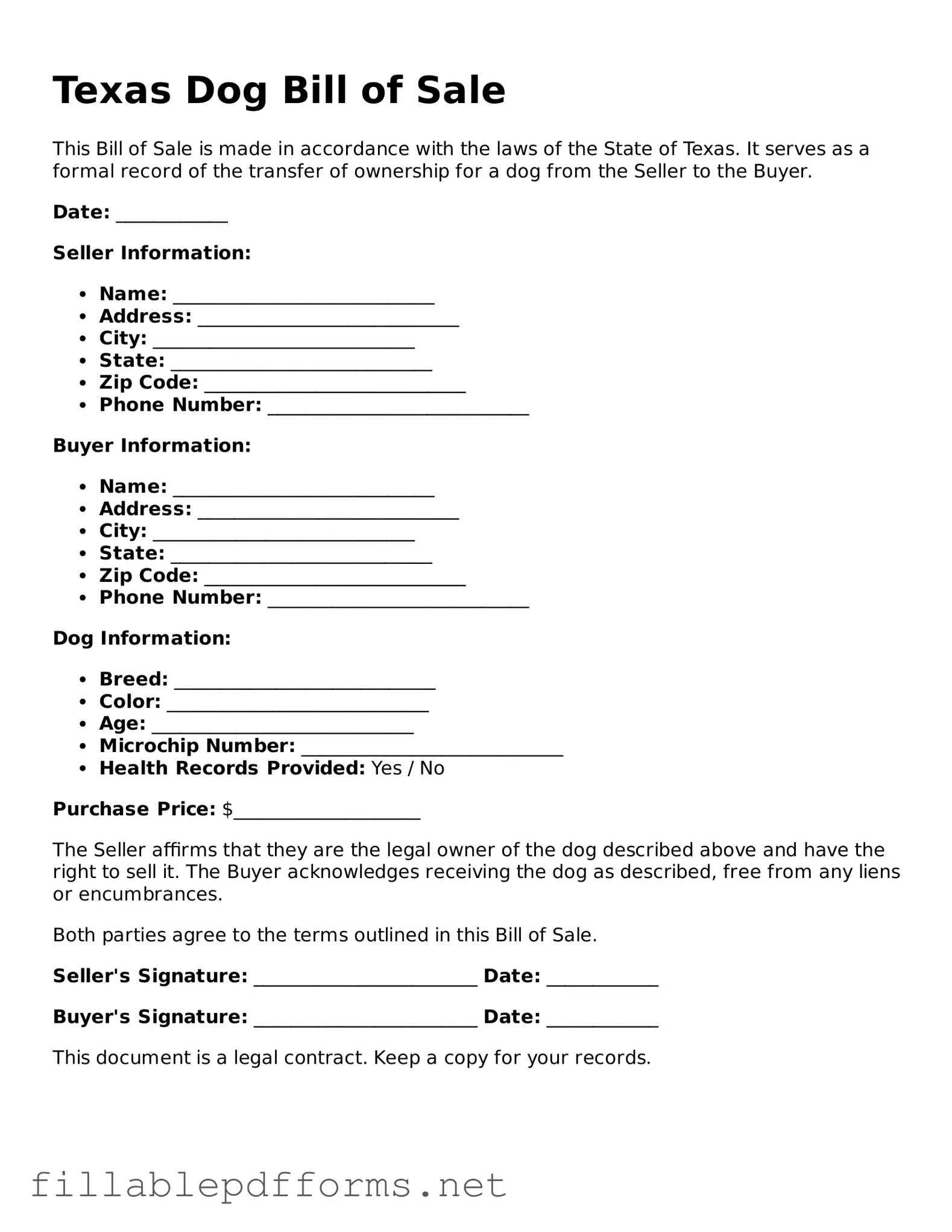Attorney-Verified Dog Bill of Sale Form for Texas State
The Texas Dog Bill of Sale form is a legal document used to transfer ownership of a dog from one party to another. This form serves as proof of the transaction and includes essential details about the dog, such as its breed, age, and any identifying features. Utilizing this form can help ensure a smooth transfer and protect both the buyer and seller in the process.
Launch Editor Here
